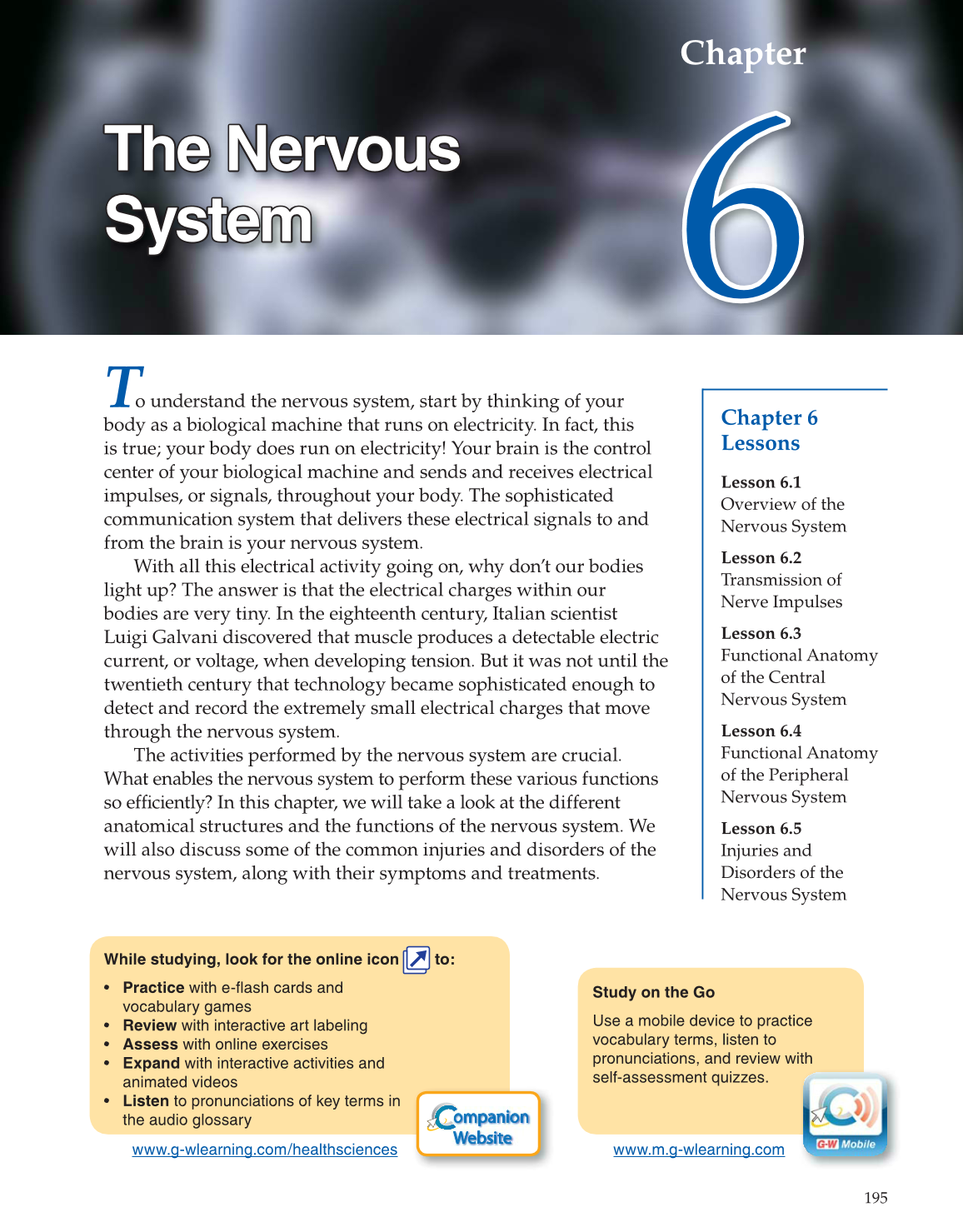195
Study on the Go
Use a mobile device to practice
vocabulary terms, listen to
pronunciations, and review with
self-assessment quizzes.
While studying, look for the online icon to:
• Practice with e-fl ash cards and
vocabulary games
• Review with interactive art labeling
• Assess with online exercises
• Expand with interactive activities and
animated videos
• Listen to pronunciations of key terms in
the audio glossary
ompanion ompanion
Websiteetisbe W
www.g-wlearning.com/healthsciences www.m.g-wlearning.com
6Chapter
6
The Nerv ous The Nervous
Sy Systemmets
T
o understand the nervous system, start by thinking of your
body as a biological machine that runs on electricity. In fact, this
is true; your body does run on electricity! Your brain is the control
center of your biological machine and sends and receives electrical
impulses, or signals, throughout your body. The sophisticated
communication system that delivers these electrical signals to and
from the brain is your nervous system.
With all this electrical activity going on, why don’t our bodies
light up? The answer is that the electrical charges within our
bodies are very tiny. In the eighteenth century, Italian scientist
Luigi Galvani discovered that muscle produces a detectable electric
current, or voltage, when developing tension. But it was not until the
twentieth century that technology became sophisticated enough to
detect and record the extremely small electrical charges that move
through the nervous system.
The activities performed by the nervous system are crucial.
What enables the nervous system to perform these various functions
so effi ciently? In this chapter, we will take a look at the different
anatomical structures and the functions of the nervous system. We
will also discuss some of the common injuries and disorders of the
nervous system, along with their symptoms and treatments.
Chapter 6
Lessons
Lesson 6.1
Overview of the
Nervous System
Lesson 6.2
Transmission of
Nerve Impulses
Lesson 6.3
Functional Anatomy
of the Central
Nervous System
Lesson 6.4
Functional Anatomy
of the Peripheral
Nervous System
Lesson 6.5
Injuries and
Disorders of the
Nervous System
